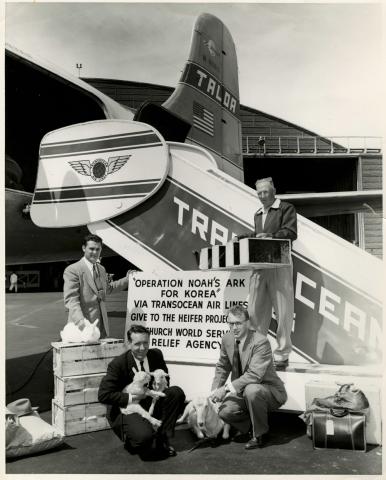
Description
This photograph shows four men dressed in suits posed next to an airplane that says “Transocean” on the stairway leading up to the aircraft. Each man is holding an example of the animals and insects that the Heifer Project was sending as aid to South Korea. By 1954, the Heifer International project had shipped 222 goats, 331 pigs, 70 chickens, 216,000 hatching eggs, 500 rabbits and 200 hives of honey bees to Korea. Due to the ravages of three years of fighting in the war torn land, many of these animals were in critically short supply, especially with the number of orphanages, schools and different homes being opened to take in those that had lost everything. By the end of 1954, there were over 400 registered orphanages in the Republic of Korea, and they continued to grow by over 1,000 children a week as more came in off of the streets.
Source-Dependent Questions
- Look closely at the photo. Describe what is taking place in the image.
- What context clues can be gathered by the sign? By 1954, the Heifer International project had shipped 222 goats, 331 pigs, 70 chickens, 216,000 hatching eggs, 500 rabbits and 200 hives of honey bees to Korea. How would these donations build relationships with South Koreans?
- What considerations would Heifer International have to take in order to ship animals from one part of the world to another?
Citation Information
Heifer International, ca. 1952. Courtesy of Heifer International